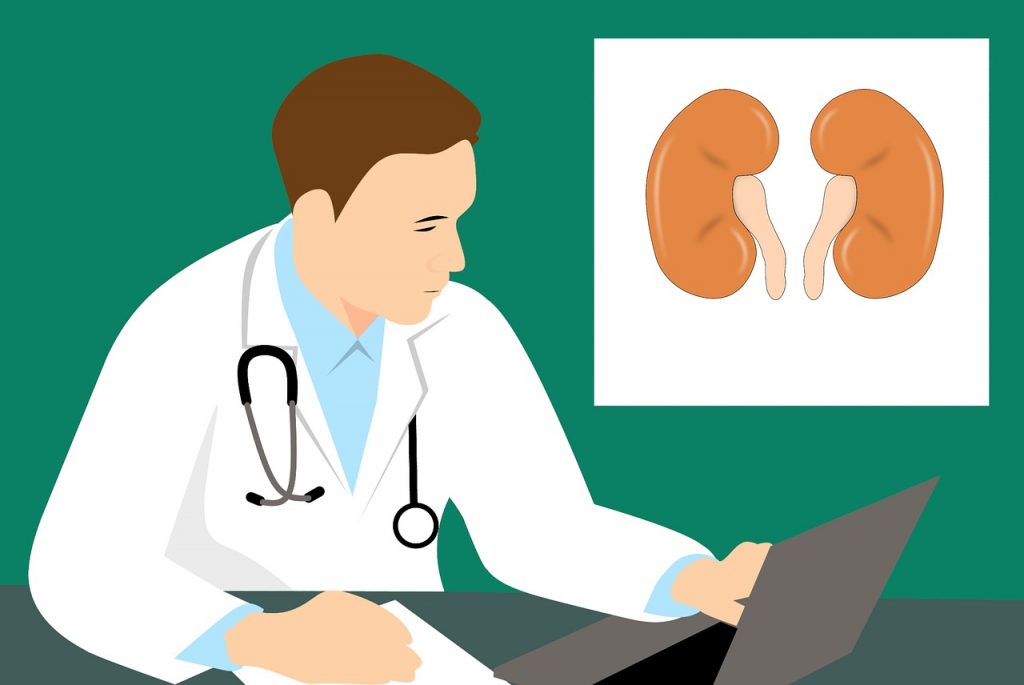Randomized Trial to Evaluate the Efficacy and Safety of Cinacalcet Treatment in Combination With Low Dose Vitamin D for the Treatment of Subjects With Secondary Hyperparathyroidism (SHPT) Recently Initiating Hemodialysis
Official Title
Randomized Trial to Evaluate the Efficacy and Safety of Cinacalcet Treatment in Combination With Low Dose Vitamin D for the Treatment of Subjects With Secondary Hyperparathyroidism (SHPT) Recently Initiating Hemodialysis
Conditions
- Chronic kidney disease
- Secondary hyperparathyroidism
Study Type
Interventional
Study Design
Treatment, Randomised, Open Label, Parallel Assignment, Safety/Efficacy Study
Further Details
Primary outcome measures
- Achievement of a 30% reduction in mean PTH from baseline to during the efficacy assessment phase at month 6 (weeks 22 to 26)
[ Time Frame: From Baseline to during the efficacy assessment phase at month 6 (weeks 22 to 26) ]
[ Designated as safety issue: No ]
Secondary outcome measures
- Achievement within the specified treatment targets for PTH; Ca; and P during the efficacy assessment phase at month 6 (weeks 22 to 26)
[ Time Frame: During the efficacy assessment phase at month 6 (weeks 22 to 26) ]
[ Designated as safety issue: No ] - Achievement of a greater than or equal to 30% reduction in mean PTH from baseline to during the efficacy assessment phase at month 12 (weeks 48 to 52)
[ Time Frame: Baseline to during the efficacy assessment phase at month 12 (weeks 48 to 52) ]
[ Designated as safety issue: No ] - Achievement within the specified treatment targets for PTH; Ca; and P during the efficacy assessment phase at month 12 (weeks 48 to 52)
[ Time Frame: During the efficacy assessment phase at month 12 (weeks 48 to 52) ]
[ Designated as safety issue: No ] - Achievement of a greater than or equal to 30% reduction in mean PTH from baseline to during both efficacy assessment phases at month 6 (weeks 22 to 26) and month 12 (weeks 48 to 52)
[ Time Frame: From baseline to during both efficacy assessment phases at month 6 (weeks 22 to 26) and month 12 (weeks 48 to 52) ]
[ Designated as safety issue: No ] - Achievement within the specified treatment targets for PTH; Ca; and P during both efficacy assessment phases at month 6 (weeks 22 to 26) and month 12 (weeks 48 to 52)
[ Time Frame: During both efficacy assessment phases at month 6 (weeks 22 to 26) and month 12 (weeks 48 to 52) ]
[ Designated as safety issue: No ] - Absolute values and percent changes from baseline for PTH, Ca, and P
[ Time Frame: The efficacy assessment phase at month 6 (weeks 22 to 26) and the efficacy assessment phase at month 12 (weeks 48 to 52) ]
[ Designated as safety issue: No ] - Subject incidence of acute episodes of hypercalcemia / hyperphosphatemia
[ Time Frame: The efficacy assessment phase at month 6 (weeks 22 to 26), the maintenance phase and the efficacy assessment phase at month 12 (weeks 48 to 52) ]
[ Designated as safety issue: Yes ]
Study arms and assigned interventions
- Cinacalcet Group: Experimental
- Cinacalcet plus low dose active Vitamin D (if prescibed)
- Control Group: Active Comparator
- Flexible active vitamin D dosing
Study Start
February 2009 – March 2012
Eligibility & Criteria
- Ages eligible for study: 18 years and older
- Genders eligible for study: Both
- Accepts healthy volunteers: No
Inclusion criteria
- Adults greater than or equal to 18 years of age on hemodialysis for > 3 and less than or equal to 12 months prior to enrollment into the study
- Mean of 2 PTH determinations during the screening period (drawn at least 2 days apart) > 300 pg/mL (31.8 pmol/L); or biPTH > 160 pg/mL (17.0 pmol/L)
- Mean of 2 corrected serum calcium determinations drawn on the same day as the PTH determinations greater than or equal to 8.4 mg/dL (2.1 mmol/L)
- Subject will be able to complete the study, to the best of his/her knowledge
- Before any study-specific procedure, the appropriate written informed consent must be obtained
Exclusion criteria
- Mean of 2 PTH determinations during the screening period (drawn at least 2 days apart) > 800 pg/mL (84.9 pmol/L); or biPTH > 430 pg/mL (45.6 pmol/L) AND receiving vitamin D on entering screening
- Parathyroidectomy (partial or full) less than or equal to 6 months before entering screening
- Anticipated parathyroidectomy (partial or full) within 6 months after randomization
- Have a scheduled date for kidney transplant surgery
- Received cinacalcet since initiating hemodialysis
- Have received vitamin D therapy for less than 30 days before entering screening or required a change in prescribed vitamin D brand or dose within 30 days before entering screening. If subjects are not receiving vitamin D therapy, they must remain free of vitamin D therapy for the 30 days before entering screening
- Subject is pregnant (eg, positive HCG test) or is breast-feeding
- Refusal to use highly effective contraceptive measures (as determined by the investigator) throughout the study (screening and post enrollment)
- Current gastrointestinal disorder that may be associated with impaired absorption of orally administered medications or an inability to swallow tablets
- Known sensitivity, intolerance, or other adverse response to cinacalcet which would prevent on-study treatment compliance
- Have an unstable medical condition within 30 days before screening, or otherwise unstable in the judgment of the investigator
- Subject is currently enrolled in, or fewer than 30 days prior to entering screening have passed since subject received other investigational agent(s) (devices or drug).
Total Enrolment
300
Contact Details
Amgen Call Center
866-572-6436
All content and media on the HealthEngine Blog is created and published online for informational purposes only. It is not intended to be a substitute for professional medical advice and should not be relied on as health or personal advice. Always seek the guidance of your doctor or other qualified health professional with any questions you may have regarding your health or a medical condition. Never disregard the advice of a medical professional, or delay in seeking it because of something you have read on this Website. If you think you may have a medical emergency, call your doctor, go to the nearest hospital emergency department, or call the emergency services immediately.







